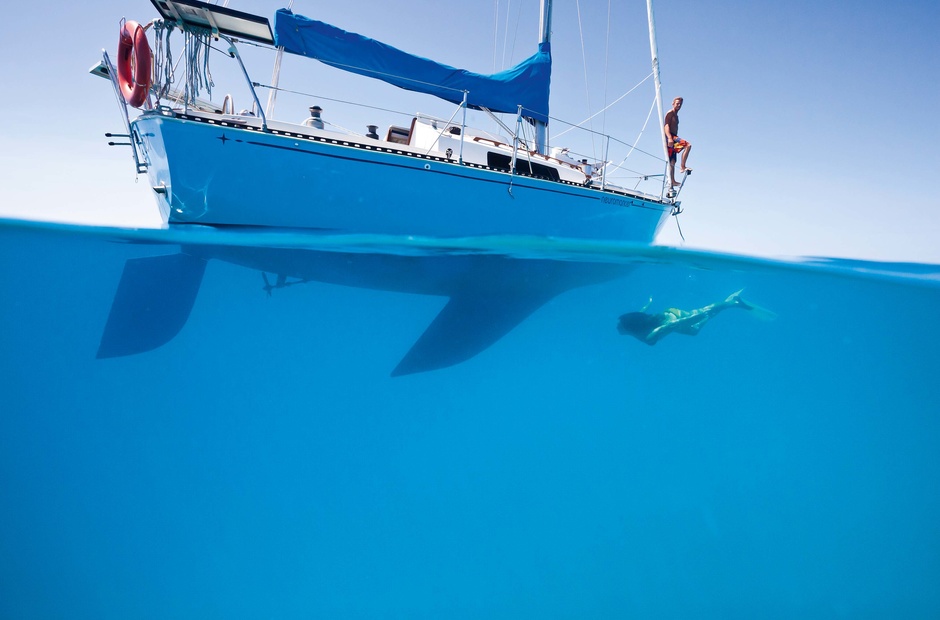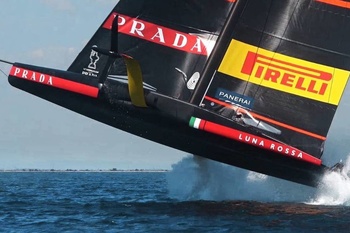A sailing veteran and designer of many sailing and motor yachts, Roger Marshall wrote an article for Sail Magazine detailing modern keel attachment techniques and their weaknesses.
In the pursuit of performance on modern yachts, ever thinner keels are set. The problem arises: the thinner the keel, the harder it is to attach it to the hull.
The problem with a long history
In June 2008, the 38-foot sloop Cynthia«Woods»lost the keel in Mexico City Bay during a race from Galveston to Veracruz. Five of the six crew members were rescued two days after the crash and sent ashore by a Coast Guard helicopter. Not everyone was able to get back on that helicopter. Officer Roger Stone, responsible for security on board, drowned while rescuing two students from a flooded cabin.
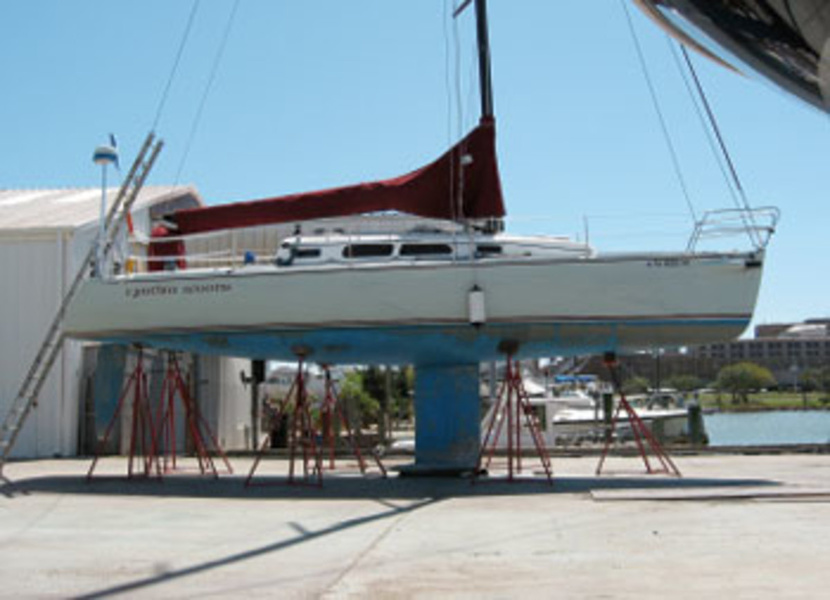
This tragic incident is one of many in a series of crashes that have occurred in Europe and America in recent years due to keel problems.
However, these problems did not appear yesterday. In the past, when iron forged nails were used on ships and copper plates were used as a neo-rustayka, there were many cases of keel loss.
The main reason for this was the corrosion of iron bolts.
Traditional keel fixing structures
On some older boats with finned keel bolts were inserted into pockets inside the keel and nuts were screwed into these pockets. Such fastening of the keel made it possible to examine the keel fastener for metal corrosion.

This type of keel fastening proved to be time consuming and expensive, so on most production yachts it has been replaced. The lower part of the bolt was bent at an angle to resemble the letter «L» or «J». The bolt bent in this way had to be firmly attached to the lead-infilled fin of the keel.
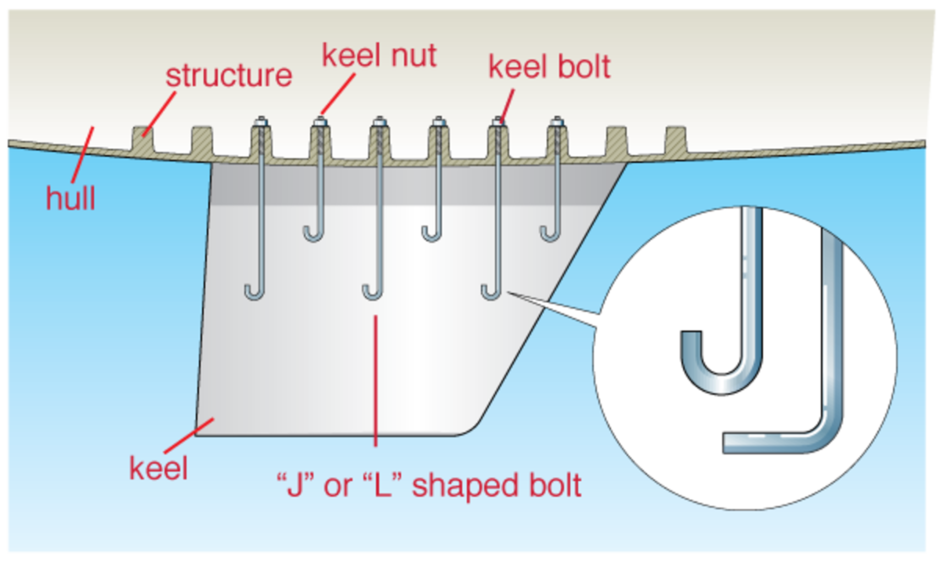
Some shipbuilders decided that lead-covered studs would be enough to keep the keel in place. But this method of anchoring was unreliable, because over time the keel began to create additional stress on the hull when the lead deformed under the pressure of the bolts and slipped over them.
Modern keel bolt fixing designs
Modern long keels with a bulbous end and their extremely slim profile create far more design problems than the conventional fin keels that can be seen on most production yachts.
Instead, the lead bulb is bolted to the bottom of the keel fin (which can be made of metal or composite material) and the fin is attached to the hull in several ways.
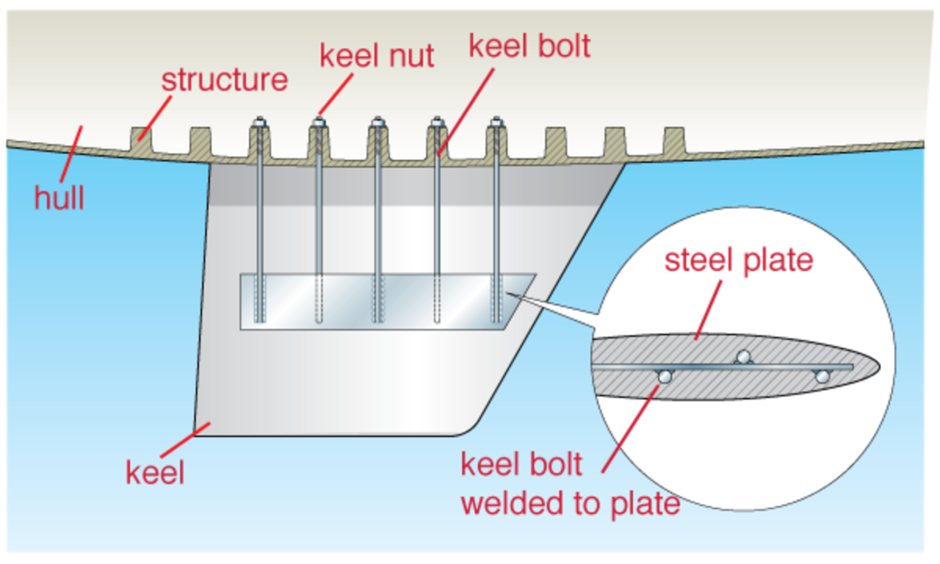
One common way to attach the keel to the body is to mount the fin of the keel in an airtight box like a centreboard manhole and bolt the structure. Another way is to weld a sheet of metal horizontally to the top of the fin and bolt the keel to the bottom of the boat through it.
What could cause such fasteners to collapse? The pores formed when welding parts and the loss of metal strength due to heating and subsequent cooling sometimes lead to the loss of fine finned keels with bulb. But no less important is the fact that the thin profile of the keel is subjected to a huge load from the bulb at the end of the long fin when the yacht goes under the heel. All of the above, as well as the constant operation of the keel and vibrations, can weaken the welding joints and lead to the loss of the keel.
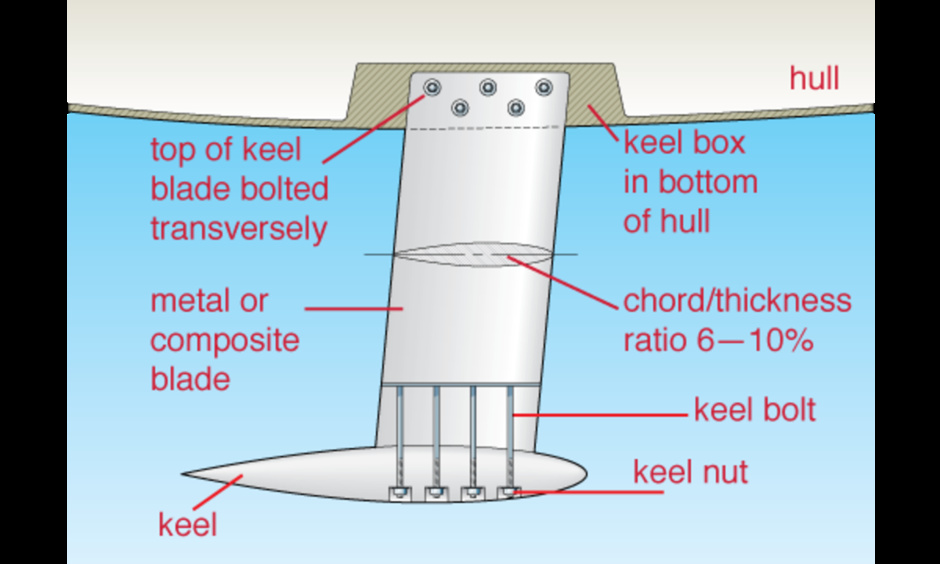
Modern racing yachts' keels are not designed for impact loading at any speed. When a bottom collision occurs, the keel not only breaks off, but also damages the hull near the top of the fin.
Look at the photo of the inverted hull of the yacht Cheeki Rafiki. Here you can see how the top layers of glass fabric are torn off when the keel is lost and if you look closely you can see corrosion marks on some keel bolts.
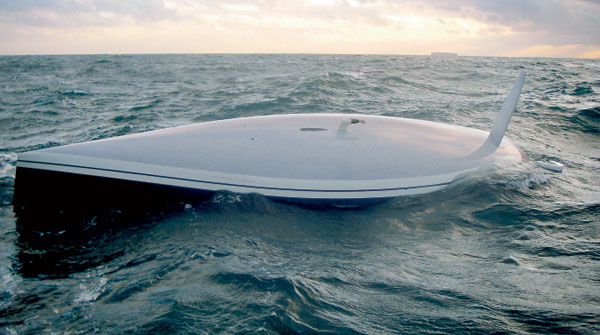
There may also be a gap between the mounting surface of the keel and the body, usually at the nose of the keel. This is due to compression of the hull structure in the anchorage area because the keel always wants to turn in the stern.
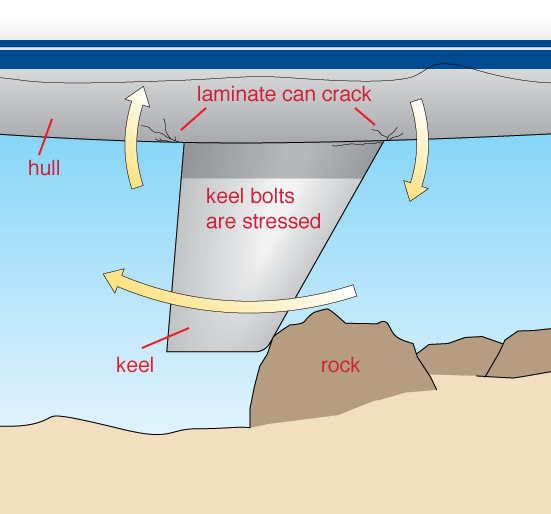
When grounding, the load on an already loaded fine fin keel with a bulb may be excessive. It may break the welded joint or cut off the mounting bolts. On a composite fin keel, a blow may knock the bulb off the fin, and if the fin is long, it may break itself or damage the body.
In addition to grounding, there are other problems that can be encountered. If a yacht descends from a huge wave, the keel-hull connection will overload, resulting in splitting of the hull and loss of the keel over time.
The characteristics of the materials also affect the reliability of the keel.
There are many situations in which the modern keel can be lost in transition. Unfortunately, in most cases it is almost impossible to know the cause of the loss of the keel until it is examined. Poor laminar characteristics of resin and materials in general can also lead to loss of keel.
«The first calls»that warn of keel problems
This is not a complete list of possible indicators of potential keel problems, but any of the bells below «should be answered» immediately by a thorough examination by professionals.
- Damaged GRP or darkening due to corrosion or penetration of water around the attachment of the keel to the body
.irradiated paint), between the keel and the body; -
Water access to the keel bolts as a result of shrinkage of the body structure around the keel mount;
Remember, all keel bolts must pass through the rigidity of the housing set. The keel should not make any noise when changing the tilt and in general in motion. If the keel hits anything at sea or runs aground, the condition of the anchorages in the dry dock or by a diver surveyor should be checked. A stranded yacht can damage the hull as well as the keel mount itself.

